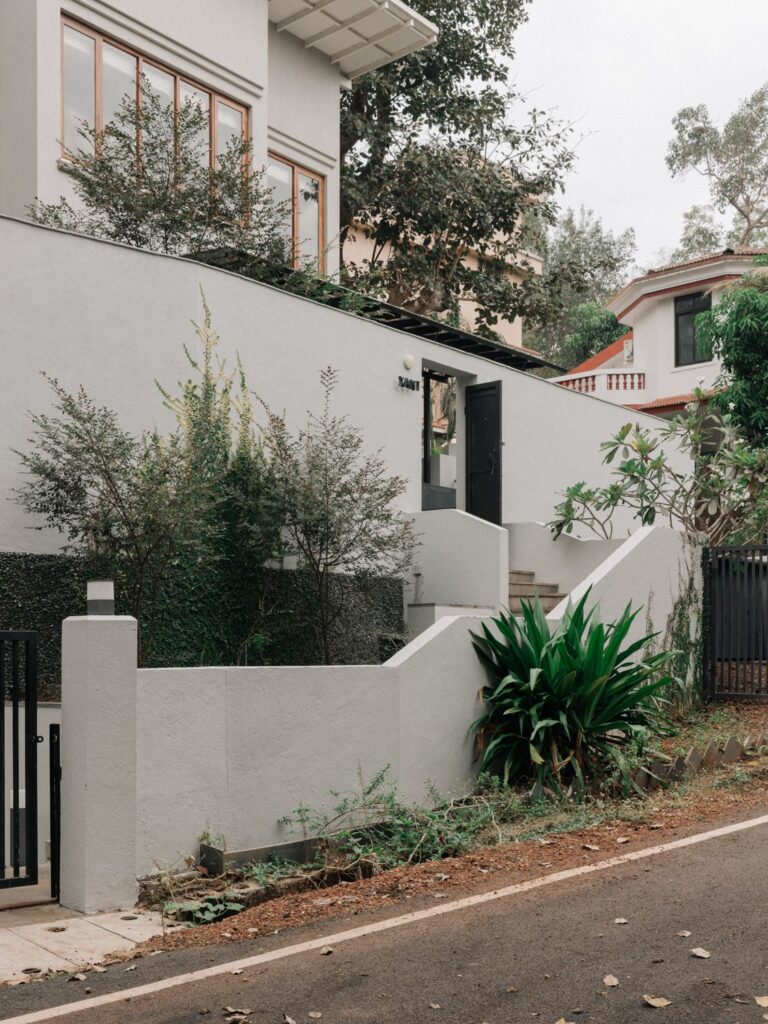
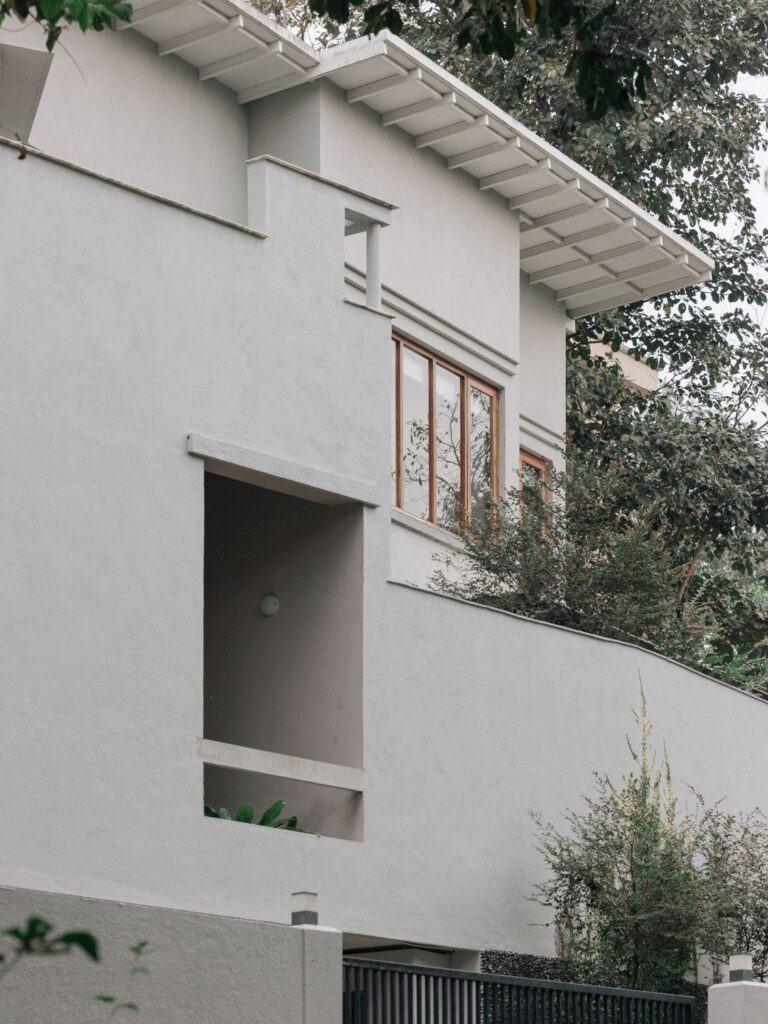
The site is located in a village named Salvador Do Mundo in North Goa, India. Goa experiences tropical climate with monsoons for over six months and the form of architecture is a response towards this climatic aspect. The vicinity where the house is built has sporadically distributed houses and thus feels isolated. The rest of the surrounding area is covered in dense vegetation. Especially the front is densely covered with large trees.



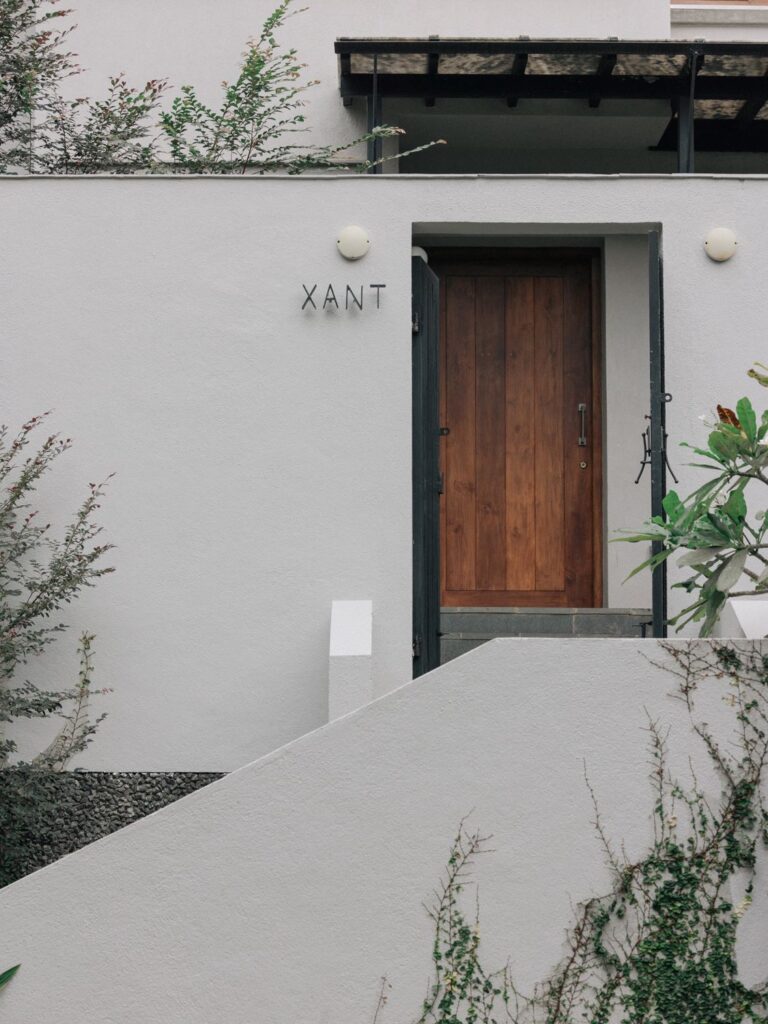

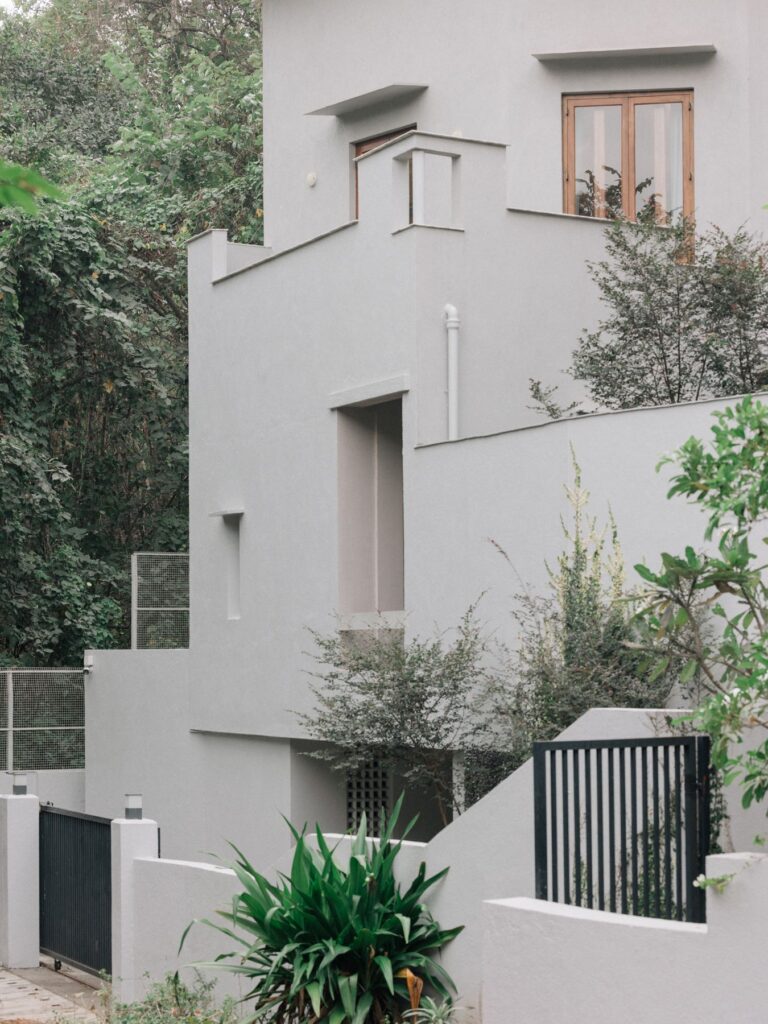
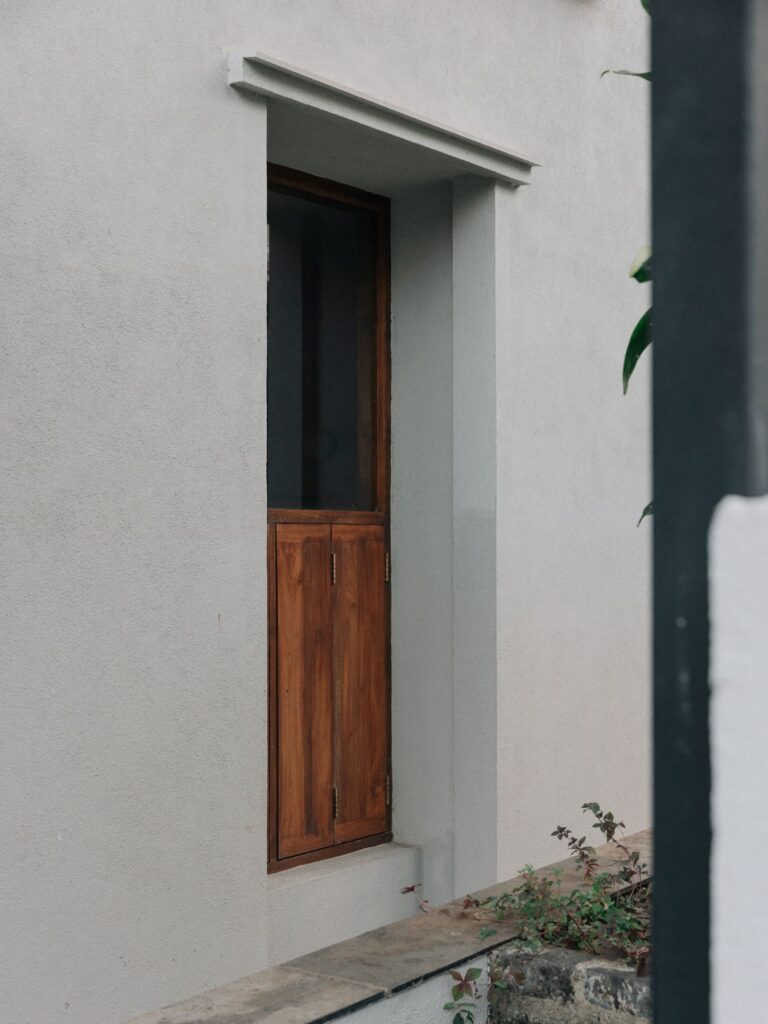
The site has a steep slope of 1:3. The main house, pool and courtyard are all placed at the highest contour and a flight of stairs gives access to the road below. Our first atavistic feeling for the site was to design a house that was internal without being ‘closed’ in order to respond to the setting. For the house to be internal it needed a hortus conclusus of a domestic scale to which all spaces open. The light, ventilation, and views are borrowed from this court. The wall enclosing this courtyard gives a sense of security & protection from an uncertain exterior landscape. This court houses a delicate garden almost an antithesis to the outside landscape.

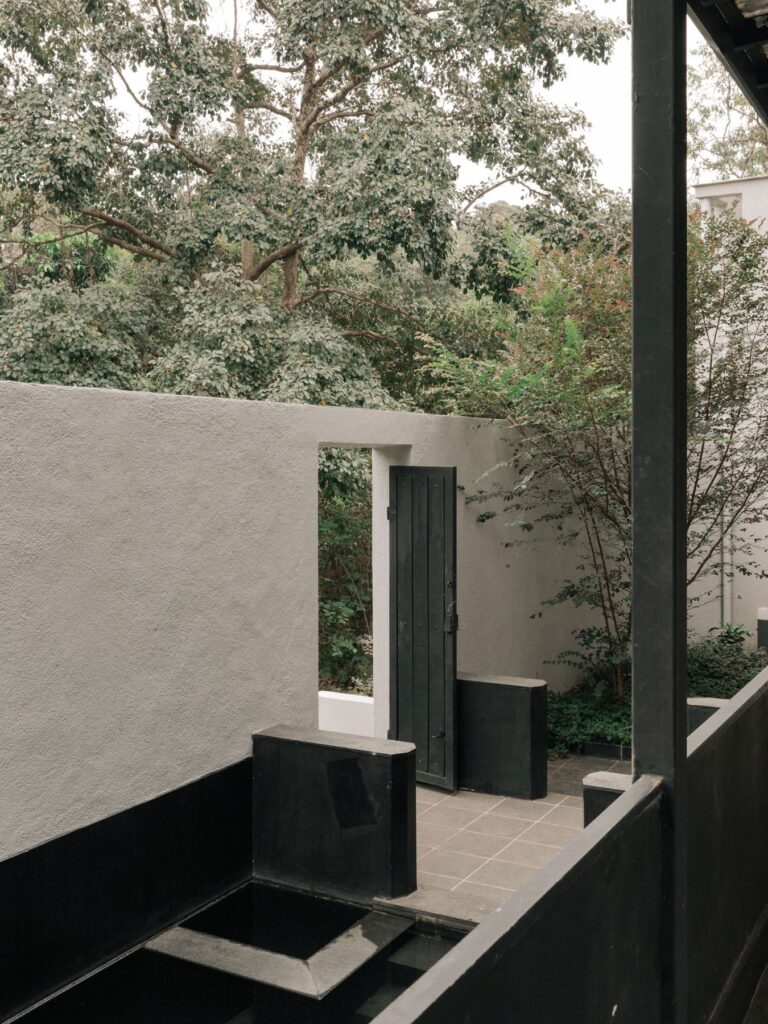


The spaces are planned in a linear way. However, marginal offsets in walls give each space a unique light and provide distinct view of the landscape in the courtyard as seen from the living, dining or bedroom and is a matter of contemplative subject.
A small pool is located along the entry path to the house. This pool is lined with black tiles that do not allow one to gauge the depth of the pool. As one descends in the pool the walls on two sides further enhance the subterranean feeling. Making one’s experience in the pool more reflective and meditative.


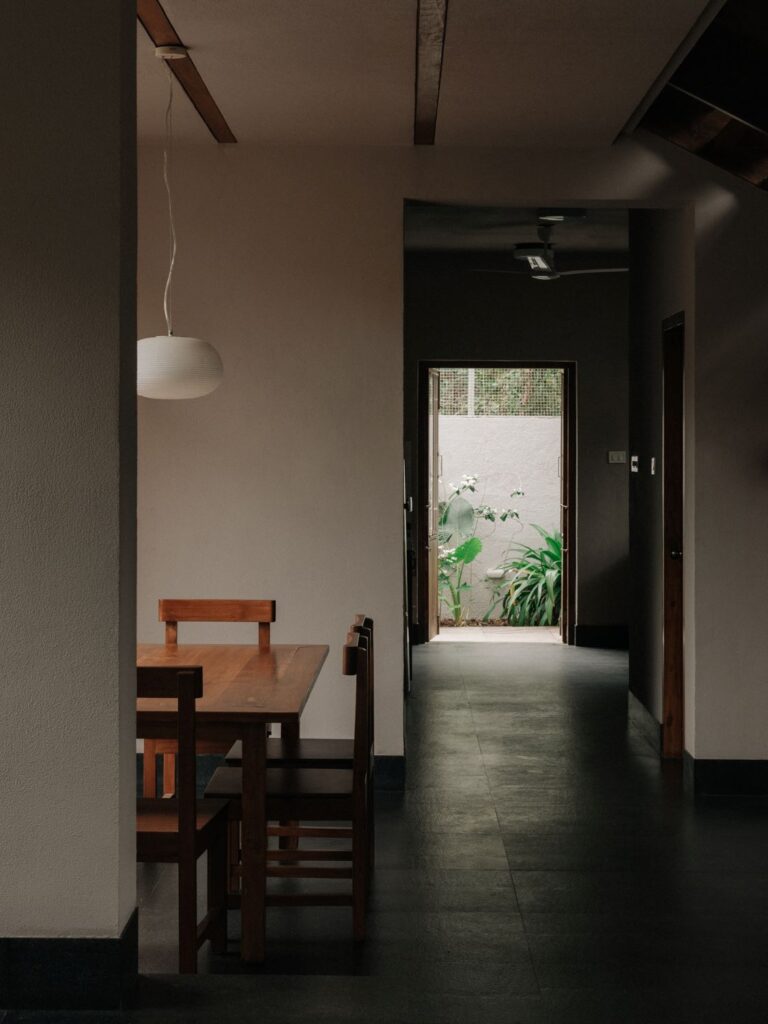
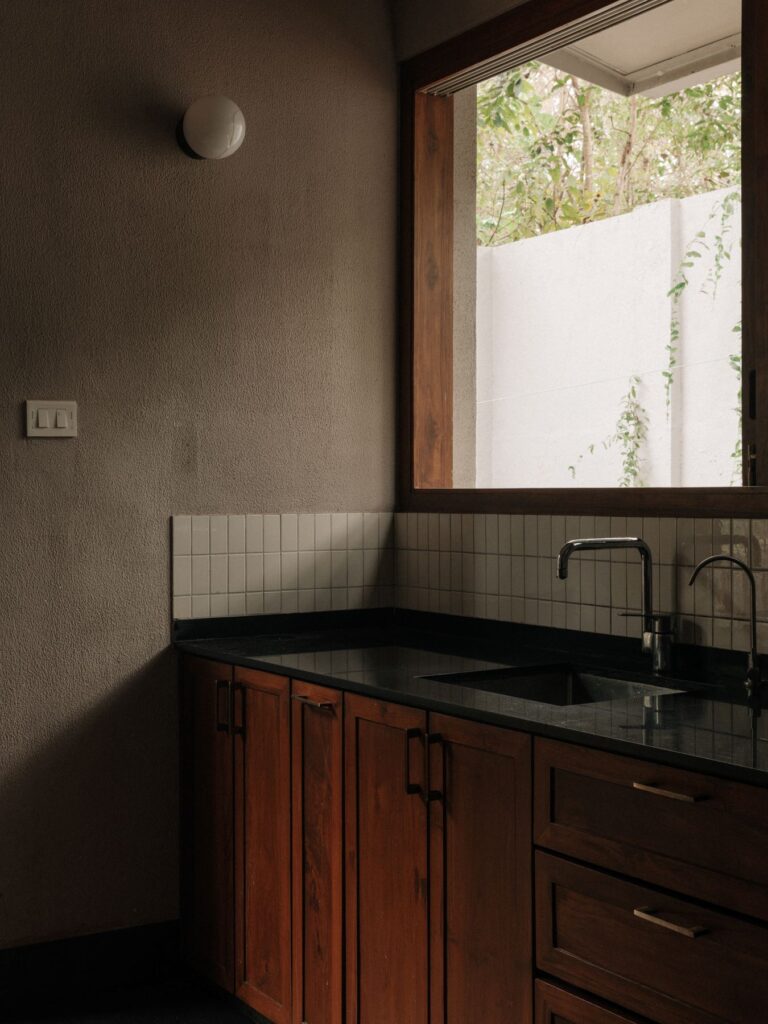


The framed views of the quiet nature outside and the simplicity of the finishes allow the mind and the eye to rest and dwell. The house has a certain amount of inherent darkness allowing the unseen spaces to dwell in the mind.
The design is an attempt towards creating a peaceful space that fulfils humble aspirations of its inhabitants.







Project Details:
Name: House in Salvador Do Mundo
Location: Salvador Do Mundo, North Goa, India
Status: Completed
Site Area: 350 sqm
Built-up Area: 230 sqm
Typology: Residential Architecture
Design Firm: Field Atelier
Photographs: ©Shantanu Starick
Sketches: ©Yatin Fulari, Field Atelier







